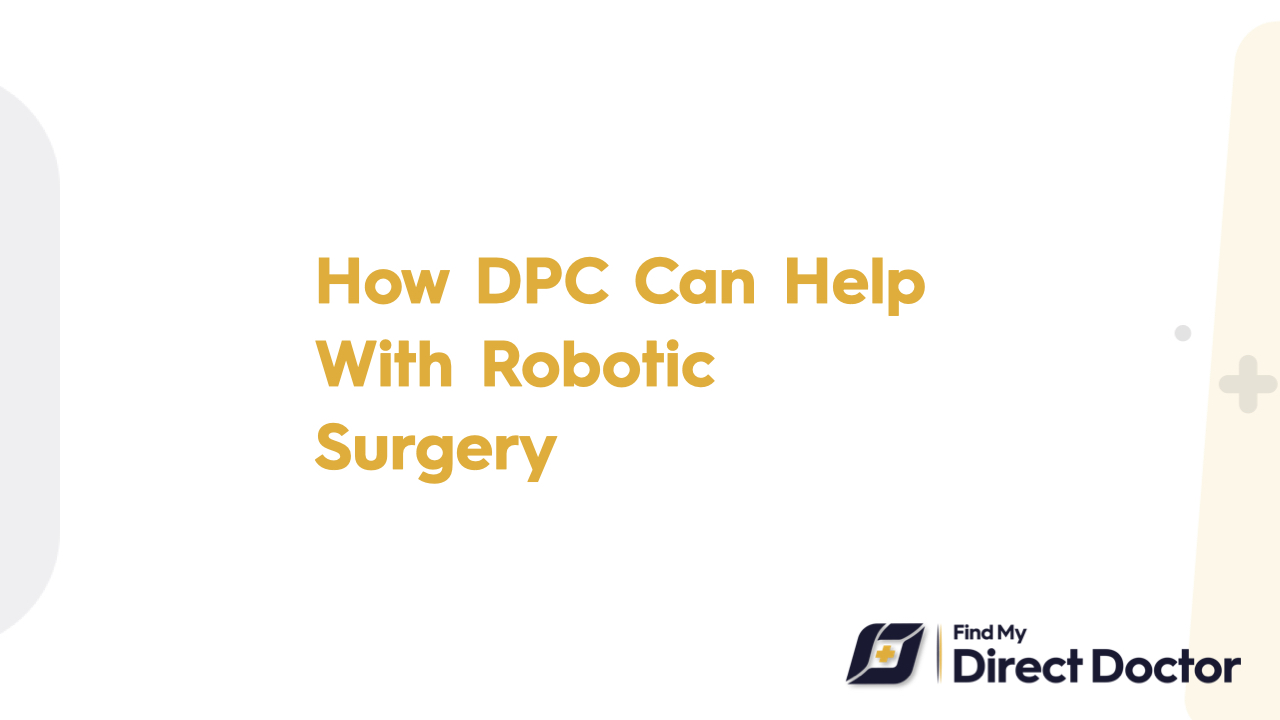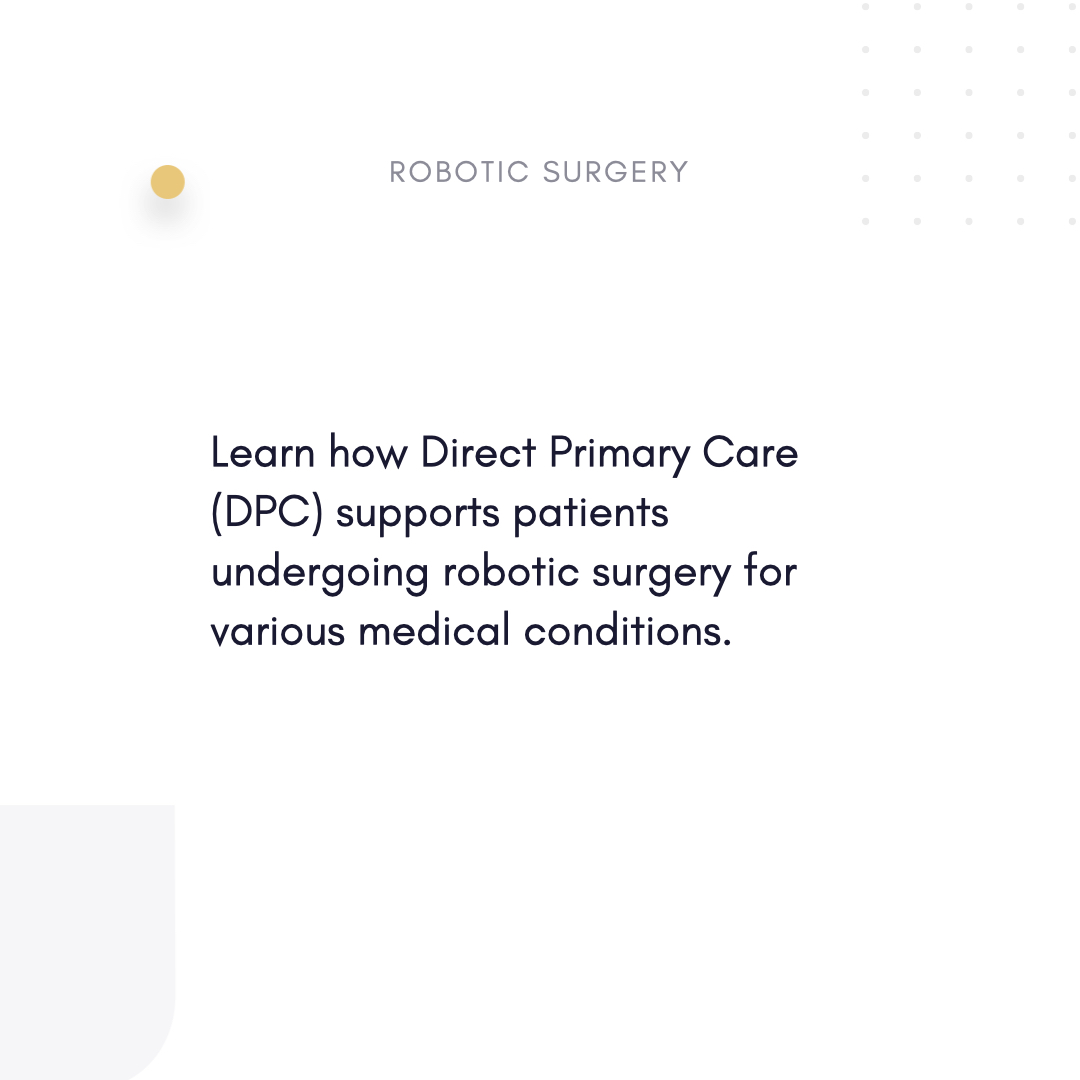Robotic Surgery and Direct Primary Care (DPC): Precision, Partnership, Faster Recovery
If you need a complicated surgery, robotic-assisted techniques can help with minimally invasive options. Direct primary care (DPC) makes sure that your procedure is planned, affordable, and right for your healing.

What You Need to Know About Robotic Surgery: More Accuracy, Fewer Scars
Surgeons use robotic arms to do complicated surgeries through small cuts. Common uses:
- Prostatectomy: Getting rid of prostate cancer.
- Hysterectomy: Fibroids or cancer in the uterus.
- Colorectal: Resection of the tumor while preserving the nerves.
Important information:
- Safety: Less blood loss and risk of infection than open surgery.
- Costs: DPC memberships (150–400 USD/month) include pre-op consultations and follow-ups, which is different from traditional fees (20,000–50,000 USD/surgery).
Risks of delay:
- Growth of the tumor, damage to organs.
How DPC Improves the Results of Robotic Surgery
Direct Primary Care (DPC) improves surgical care by making sure that everything runs smoothly and putting the patient first.
Complete Getting Ready for Surgery
- Fast diagnostics: Schedule MRI/CT scans within 48 hours to plan the surgery.
- Prehabilitation programs: Make breathing exercises and protein-rich diets to help you get better faster.
- Managing medications: Before surgery, change the doses of blood thinners, diabetes medications, or steroids.
Clear prices and all-around help
- Care that includes everything: As a member, you get help with planning rehab, coordinating surgeons, and working with hospitals.
- Savings on costs: With self-pay DPC partnerships, you can save 20–40% on facility fees.
- Focus on mental health: Help people deal with their anxiety before surgery by giving them mindfulness apps or therapy.
Long-Term Health and Personalized Recovery
- Access 24 hours a day, 7 days a week: Take care of pain, fever, or incision worries right away.
- Check-ins online: Use telehealth to keep an eye on wounds and catch infections early.
- Rehab coordination: Work with a physical therapist or occupational therapist to help you get your mobility back.
DPC Benefits for Patients Undergoing Robotic Surgery
- No waiting times: 85% of DPC patients schedule surgery within two weeks, while it usually takes six weeks or more.
- Continuity: One group takes care of medications, lab work, and long-term comorbidities.
- No extra costs: Prices that are clear (for example, 30,000 USD for a prostatectomy that includes everything).
Success Stories from Real Life
- Case 1: Carlos, 52 years old, has localized prostate cancer. Carlos's DPC team did robotic prostatectomy on him, and he was able to control his bladder again in three months.
- Case 2: Emma, 45, with complicated fibroids. Emma's DPC provider used robotic hysterectomy to keep her ovaries and avoid open surgery.
Questions and Answers: Robotic Surgery at DPC
- Q: How long does it take to get better in the hospital?
- A: Most procedures take 1 to 2 days, and full recovery takes 2 to 6 weeks.
- Q: Do robotic arms work on their own?
- A: No. Surgeons have better control over every movement.
- Q: Is robotic surgery possible for people who are overweight?
- A: Yes—DPC gets your weight just right before surgery so that you can get in more safely.
- Q: What if things go wrong?
- A: DPC makes sure that changes are made quickly or that open surgery is done if necessary.
Why DPC is the Best for Surgical Care
The American College of Surgeons (ACS) stresses the importance of optimizing before surgery. DPC delivers by:
- Fewer problems: Prehab lowers the risk of infection by 30%.
- 90% of DPC patients say they are happy with their treatment, compared to 75% of patients in the United States.
- Saving money: Members save between 10,000 USD and 25,000 USD by buying in bulk.
Final Thoughts
Robotic surgery in DPC isn't just about the technology; it's also about working with a team that is committed to your quick and smooth recovery. With DPC, you can skip the wait for insurance and get a care plan that changes as you get better. Surgical care that is as precise as the robots that guide it, from pre-op preparation to full mobility.






